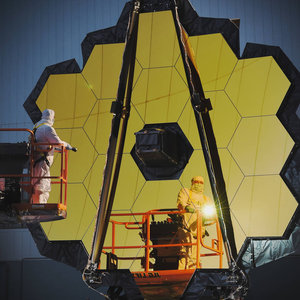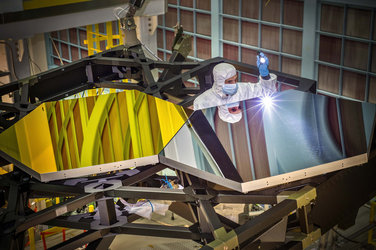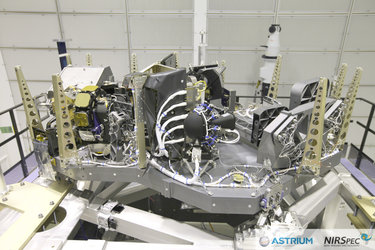Accept all cookies Accept only essential cookies See our Cookie Notice

About ESA
The European Space Agency (ESA) is Europe’s gateway to space. Its mission is to shape the development of Europe’s space capability and ensure that investment in space continues to deliver benefits to the citizens of Europe and the world.
Highlights
ESA - United space in Europe
This is ESA ESA facts Member States & Cooperating States Funding Director General Top management For Member State Delegations European vision European Space Policy ESA & EU Space Councils Responsibility & Sustainability Annual Report Calendar of meetings Corporate newsEstablishments & sites
ESA Headquarters ESA ESTEC ESA ESOC ESA ESRIN ESA EAC ESA ESAC Europe's Spaceport ESA ESEC ESA ECSAT Brussels Office Washington OfficeWorking with ESA
Business with ESA ESA Commercialisation Gateway Law at ESA Careers Cyber resilience at ESA IT at ESA Newsroom Partnerships Merchandising Licence Education Open Space Innovation Platform Integrity and Reporting Administrative Tribunal Health and SafetyMore about ESA
History ESA Historical Archives Exhibitions Publications Art & Culture ESA Merchandise Kids Diversity ESA Brand Centre ESA ChampionsLatest
Space in Member States
Find out more about space activities in our 23 Member States, and understand how ESA works together with their national agencies, institutions and organisations.
Science & Exploration
Exploring our Solar System and unlocking the secrets of the Universe
Go to topicAstronauts
Missions
Juice Euclid Webb Solar Orbiter BepiColombo Gaia ExoMars Cheops Exoplanet missions More missionsActivities
International Space Station Orion service module Gateway Concordia Caves & Pangaea BenefitsLatest
Space Safety
Protecting life and infrastructure on Earth and in orbit
Go to topicAsteroids
Asteroids and Planetary Defence Asteroid danger explained Flyeye telescope: asteroid detection Hera mission: asteroid deflection Near-Earth Object Coordination CentreSpace junk
About space debris Space debris by the numbers Space Environment Report In space refuelling, refurbishing and removingSafety from space
Clean Space ecodesign Zero Debris Technologies Space for Earth Supporting Sustainable DevelopmentLatest
Applications
Using space to benefit citizens and meet future challenges on Earth
Go to topicObserving the Earth
Observing the Earth Future EO Copernicus Meteorology Space for our climate Satellite missionsCommercialisation
ESA Commercialisation Gateway Open Space Innovation Platform Business Incubation ESA Space SolutionsLatest
Enabling & Support
Making space accessible and developing the technologies for the future
Go to topicBuilding missions
Space Engineering and Technology Test centre Laboratories Concurrent Design Facility Preparing for the future Shaping the Future Discovery and Preparation Advanced Concepts TeamSpace transportation
Space Transportation Ariane Vega Space Rider Future space transportation Boost! Europe's Spaceport Launches from Europe's Spaceport from 2012Latest

Simulating space for JWST’s four infrared instruments
Thank you for liking
You have already liked this page, you can only like it once!
Building a space telescope is no mean feat. Conditions here on Earth are drastically different from those experienced in orbit around our planet. How do we know that any telescope built in our controlled laboratories can withstand the harsh environment of space?
Luckily, we can recreate space-like conditions using simulators such as this thermal–vacuum chamber at NASA’s Goddard Space Flight Center in Maryland, USA. In this image, the chamber is not in action, as shown by the presence of a photographer wielding a torch on the sidelines. When switched on, multiple pumps suck all the air out to create a space-like vacuum, and the temperature can drop to a toe-curlingly low –253°C.
However, the real star of this image is the futuristic gold-coloured frame and its contents. This frame holds the Integrated Science Instrument Module, a structure containing the science instruments for 2018’s James Webb Space Telescope, or JWST, successor to the Hubble Space Telescope.
Along with the frame, this module weighs about as much as an elephant and houses four instruments to observe in the infrared, a part of the spectrum that is key for exploring the origins of the Universe and the properties of very distant cosmic objects.
This capability is the reason for the chamber’s extremely low temperature: infrared light is emitted by warm objects. To avoid infrared emissions from the telescope itself interfering with JWST’s observations, the entire telescope must be cooled to very low temperatures.
In space, JWST will make use of a giant sunshield to keep it completely in the shadows. This will keep the telescope at –233°C.
The JWST team hit a milestone last summer as all four science instruments passed their cryogenic testing in this chamber. The three near-infrared units were cooled to around –233°C, while the mid-infrared instrument reached an even lower –266°C, for a total of 116 days. For more information, read here.
After these tests, one of the units – the Near InfraRed Spectrograph – was removed and fitted with new detectors and ‘microshutters’, a new technology to study hundreds of celestial objects simultaneously using minuscule windows the width of a human hair. When this upgraded instrument is returned, the entire module will continue with further environmental tests to reproduce the conditions endured during launch and in space. For more information, read here.
JWST is a joint project of NASA, ESA and the Canadian Space Agency.
-
CREDIT
NASA/Goddard/C. Gunn -
LICENCE
ESA Standard Licence

Shelter from the Sun

Inspecting JWST’s primary mirror

Test mirror segments for the James Webb Space Telescope

JWST's Near InfraRed Spectrograph (NIRSpec)















 Germany
Germany
 Austria
Austria
 Belgium
Belgium
 Denmark
Denmark
 Spain
Spain
 Estonia
Estonia
 Finland
Finland
 France
France
 Greece
Greece
 Hungary
Hungary
 Ireland
Ireland
 Italy
Italy
 Luxembourg
Luxembourg
 Norway
Norway
 The Netherlands
The Netherlands
 Poland
Poland
 Portugal
Portugal
 Czechia
Czechia
 Romania
Romania
 United Kingdom
United Kingdom
 Slovenia
Slovenia
 Sweden
Sweden
 Switzerland
Switzerland

























